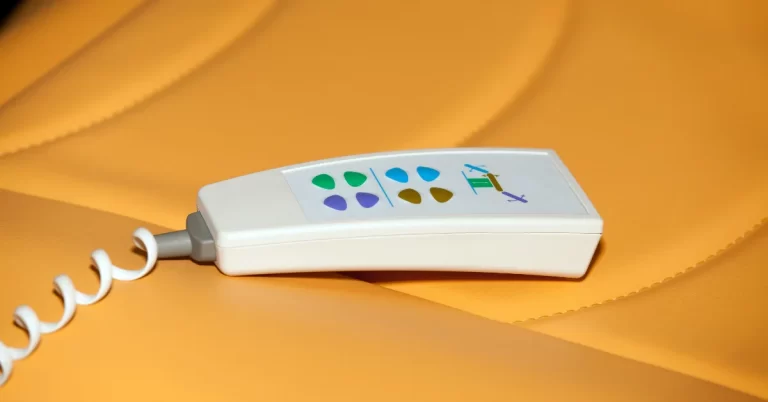How to prevent hot tub itchiness: 7 Proven Ways
Learn how to prevent itchy skin after hot tub use with these simple tips and tricks. Discover the best methods to keep your skin feeling smooth and healthy.
Do you love soaking in your hot tub but hate the itchy skin that follows? You’re not alone. Many people experience hot tub itchiness, which can ruin the relaxing benefits of a good soak. But don’t worry. There are ways to prevent this annoying problem and enjoy your hot tub without discomfort.
In this post, I’ll share 7 easy tips to prevent hot tub itchiness and keep your skin healthy and happy.
What causes Hot tub itchiness?
Hot tub itchiness is a common skin irritation after using a hot tub. It can be caused by several factors, such as:
- Bacteria: Hot tubs are warm and moist environments that can harbor bacteria, especially if not properly maintained. Some bacteria can cause infections in your hair follicles, leading to red, itchy bumps on your skin. This condition is called hot tub folliculitis.
- Chemicals: Hot tubs need chemicals to keep the water clean and safe from bacteria. However, some chemicals, such as chlorine or bromine, can be harsh on your skin and generate dryness, itching, or allergic reactions.
- Minerals: Hot tub water can also contain minerals, such as calcium or magnesium, that can leave a residue on your skin and clog your pores. This can cause your skin to feel tight and itchy.
- Heat: Hot water can also affect your skin by stripping away its natural oils and disrupting its protective barrier. This can make your skin more prone to irritation and inflammation. For more reading about hot tub additives for dry skin.

How to prevent hot tub itchiness?
The good news is that you can prevent hot tub itchiness by following these simple tips:
1. Test and balance your water regularly
One of the most important things you can do to prevent hot tub itchiness is to test and balance your water regularly. This will ensure that your water is safe and comfortable for your skin. Try your water at least once a week or more often if you use your hot tub frequently or have many guests. You should aim to keep your water within these ranges:
- pH: 7.2 – 7.8
- Total alkalinity: 80 – 140 ppm
- Calcium hardness: 150 – 250 ppm
You can utilize test strips or a digital tester to check your water levels. If they are out of range, you can use chemicals to adjust them accordingly.
2. Maintain your sanitizer levels
Another crucial factor for preventing hot tub itchiness is to maintain your sanitizer levels. Sanitizers are chemicals that kill bacteria and other microorganisms in the water. They are essential for keeping your hot tub hygienic and safe. However, too much or too little sanitizer can also cause problems for your skin.
You should test your sanitizer levels and other water parameters at least once a week. The ideal sanitizer levels depend on the type of sanitizer you use:
- Chlorine: 1 – 4 ppm
- Bromine: 2 – 6 ppm
- Biguanide: 30 – 50 ppm
- Mineral: Follow the manufacturer’s instructions
You can sanitize your water with granules, tablets, or liquid products. You should also shock your water once a week, or more often if needed, to remove any organic contaminants and boost your sanitizer’s effectiveness.
3. Choose a gentle sanitizer
If you have sensitive skin or are prone to allergic reactions, choosing a gentle sanitizer for your hot tub is important. Some sanitizers are less harsh on your skin and may cause less irritation.
For example, bromine is gentler than chlorine and has less odor. Biguanide is a chlorine-free sanitizer that is very mild on your skin. Mineral sanitizers use natural minerals, such as silver or copper, to kill bacteria without adding chemicals to the water.
You can also use ozone or UV systems to supplement your sanitizer and reduce the necessary chemicals.
4. Rinse before and after using the hot tub
A simple way to prevent hot tub itchiness is to rinse before and after using the hot tub. This will assist you in removing any dirt, sweat, or cosmetics from your skin that could clog your pores or react with the chemicals in the water.
Rinsing before using the hot tub will also help keep the water cleaner and reduce the sanitizer you need.
Rinsing after using the hot tub will help wash away any residue from the water that could irritate your skin or cause dryness.
You should use lukewarm water and a mild soap to rinse yourself thoroughly.
5. Moisturize your skin
Another tip to prevent hot tub itchiness is moisturizing your skin after using the hot tub. This will replenish the moisture and oils your skin may have lost from the hot water and chemicals.
You should use a gentle, fragrance-free moisturizer suitable for your skin type. You should apply it generously to your entire body, especially the areas more exposed to the water, such as your arms, legs, and torso.
You should also drink plenty of water to hydrate yourself from the inside and prevent dehydration.
6. Limit your soaking time
While soaking in a hot tub can be relaxing and therapeutic, you should not overdo it. Staying in the hot tub for too long can negatively affect your skin, such as dryness, itching, or inflammation.
Limit your soaking time to 15 – 30 minutes per session, depending on your comfort level and health condition. You should also avoid using the hot tub if you have open wounds, cuts, or infections on your skin, as this could increase the risk of complications.
You should also monitor the water’s temperature and ensure it is not too hot for you. The perfect temperature for a hot tub is between 100 – 104°F (38 – 40°C). Anything higher than that could cause overheating, dehydration, or burns.
7. Consult your doctor if needed
If you follow these tips and still experience hot tub itchiness, consult your doctor for advice. You may have an underlying skin disease, such as eczema or psoriasis, that makes you more prone to irritation. You may also have an infection or an allergic reaction that requires medical attention.
Your doctor can analyze the cause of your itchiness and prescribe the appropriate treatment for you. They may also recommend some products or remedies to help soothe your skin and prevent further irritation.
Can I bring my chemicals to the hot tub?
Bringing your chemicals to the hot tub is not recommended, as this can upset the balance of chemicals in the water and cause skin irritation or other problems. Always use the substances provided by the hot tub manufacturer or a professional hot tub service.
You should change the water in your hot tub every three to four months or more frequently if it is heavily used. Regularly cleaning and maintaining your hot tub can also help extend the water’s lifespan.
What other precautions?
- Do not use the hot tub with an open wound or infection.
- Do not use the hot tub if you are pregnant or have a medical condition that affects your circulation, such as diabetes or heart disease.
- Do not use the hot tub if the water temperature is above 104 degrees Fahrenheit, which can cause heatstroke or other health problems.
- Do not drink alcohol while using the hot tub, as this can impair your judgment and increase the risk of drowning or other accidents.
- Do not let children use the hot tub unsupervised or alone.
For additional information, visit Hot Tub Patio, or if you’re interested in reading reviews and guides for hot tubs, visit Hot Tub Safety.
Final Thoughts:
Hot tub itchiness is a common problem affecting anyone who uses a hot tub. However, it is not something that you have to live with. By following these 7 easy tips, you can prevent hot tub itchiness and enjoy your hot tub without any discomfort.
Remember to regularly test and balance your water, maintain your sanitizer levels, choose a gentle sanitizer, rinse before and after the hot tub, moisturize your skin, limit your soaking time, and consult your doctor if needed.
Common Queries:
Can hot tubs cause skin rashes? Yes, hot tubs can cause skin rashes due to the water’s bacteria, chemicals, and minerals. To prevent rashes, it is essential to clean and maintain the hot tub properly and take care of your skin before and after use.
Is it safe to use a hot tub if I have sensitive skin? If you have sensitive skin, you should be careful when using a hot tub and take extra care to clean and moisturize your skin. You may also want to consult a dermatologist before using a hot tub.
What should I do if the hot tub water smells bad? If the hot tub water smells bad, it may be due to bacteria or other contaminants. Only use the hot tub after cleaning and treating the water with the appropriate chemicals.
How can I alleviate itchy skin after using a hot tub? To relieve itchy skin after using a hot tub, you can try the following:
- Rinse your body with clean water immediately after exiting the hot tub to remove residual chemicals or irritants.
- Apply a soothing moisturizer or lotion to hydrate the skin.
- Avoid scratching the itchy areas, as it may worsen the irritation.
- Consult with a healthcare professional if the itching persists or becomes severe.
What exactly is hot tub folliculitis? Hot tub folliculitis, also known as Pseudomonas folliculitis or “hot tub rash,” is a skin condition caused by Pseudomonas aeruginosa. It occurs when these bacteria infect the hair follicles, leading to an itchy rash, red bumps, or pus-filled blisters on the affected areas of the skin.
Q: What are the treatment options for hot tub folliculitis? Treatment for hot tub folliculitis typically involves the following:
- Mild cases may resolve independently without treatment, but it is important to avoid scratching the affected areas to prevent secondary infections.
- Applying warm compresses or baths can help soothe the skin and relieve discomfort.
- Over-the-counter hydrocortisone creams can be applied to reduce itching and inflammation.
- A healthcare professional may prescribe oral or topical antibiotics to clear the bacterial infection in more severe cases.
Is hot tub folliculitis contagious? Yes, hot tub folliculitis can be contagious. The bacteria responsible for the infection can spread from person to person or through contaminated hot tub water. It is important to practice good hygiene and disinfection measures to prevent the spread of hot tub folliculitis.
What causes allergic reactions to hot tub chemicals? Allergic reactions to hot tub chemicals can be triggered by various factors, including:
- Sensitivity or allergy to specific chemicals used in hot tub maintenance, such as chlorine, bromine, or pH adjusters.
- Prolonged exposure to high levels of chemical disinfectants or poorly balanced water chemistry.
- Contact with other irritants or allergens present in the hot tub environment.
[wps_alert type=”note”]NOTE: If you suspect an allergic reaction, it is recommended to consult with a healthcare professional for proper evaluation and guidance.[/wps_alert]
What are the treatment options for hot tub rash? The treatment for hot tub rash depends on the severity and symptoms experienced. Here are some general recommendations:
- Keep the affected area clean and dry.
- Apply over-the-counter hydrocortisone creams to reduce itching and inflammation.
- Avoid scratching the rash to prevent secondary infections.
- If the rash persists or worsens, seek medical advice from a healthcare professional for further evaluation and treatment options.
What are the treatment options for hot tub folliculitis? Treatment for hot tub folliculitis typically involves the following:
- Mild cases may resolve independently without treatment, but it is important to avoid scratching the affected areas to prevent secondary infections.
- Applying warm compresses or baths can help soothe the skin and relieve discomfort.
- Over-the-counter hydrocortisone creams can be applied to reduce itching and inflammation.
- A healthcare professional may prescribe oral or topical antibiotics to clear the bacterial infection in more severe cases.
Can I use essential oils in the hot tub? It is not recommended to use essential oils in the hot tub, as this can upset the balance of chemicals in the water and cause skin irritation or other problems. Stick to the substances the hot tub manufacturer provides or a professional service.
How often should I clean the filters in the hot tub? Depending on usage, you should clean the filters in your hot tub every two to four weeks. Regularly cleaning the filters can help to maintain the water quality.
Relevant US Government source for more information:
For more information on hot tub safety and maintenance, you can refer to the US Consumer Product Safety Commission’s (CPSC) publication “Safety Barrier Guidelines for Home Pools,”











